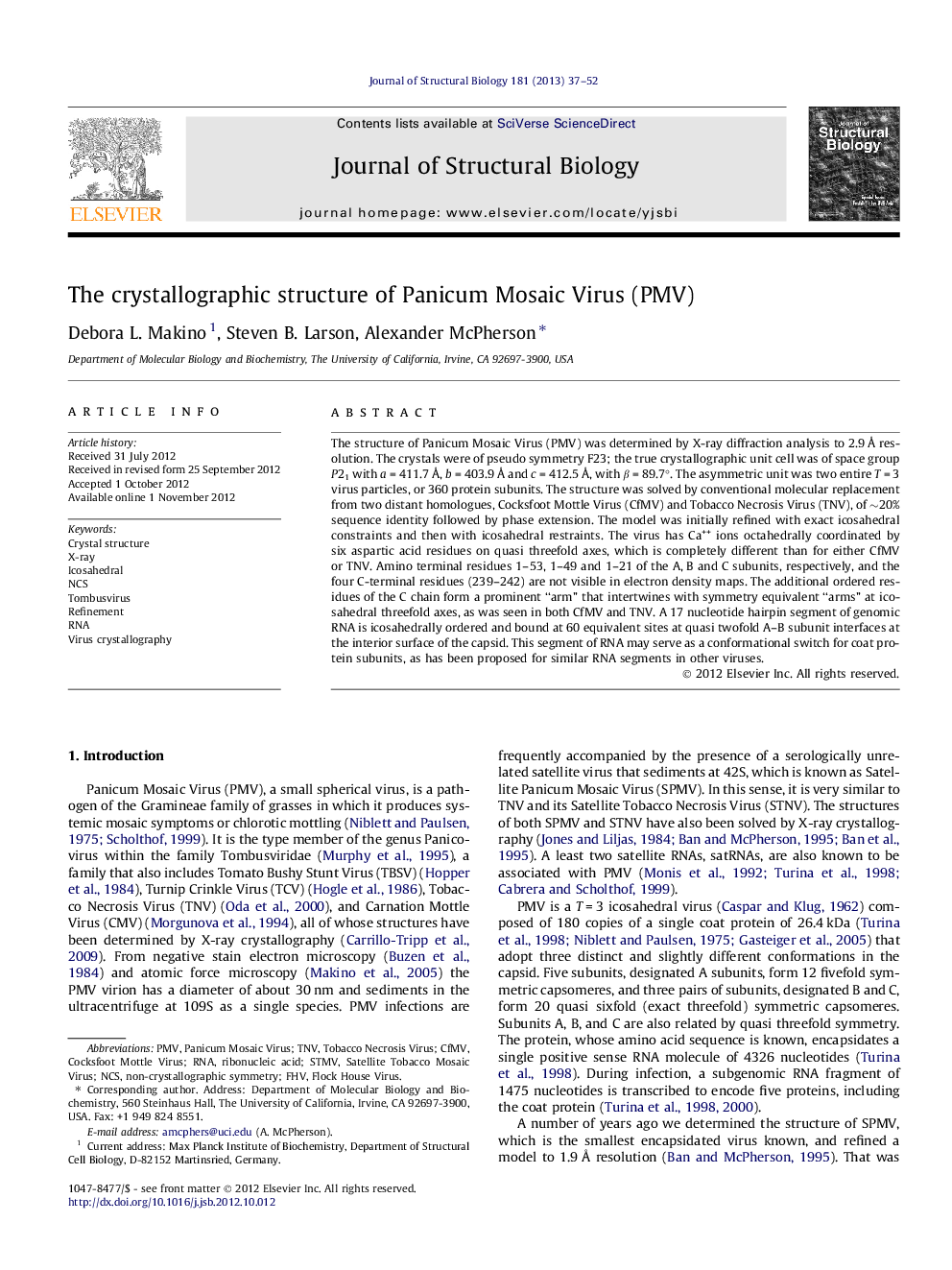| Article ID | Journal | Published Year | Pages | File Type |
|---|---|---|---|---|
| 2828547 | Journal of Structural Biology | 2013 | 16 Pages |
The structure of Panicum Mosaic Virus (PMV) was determined by X-ray diffraction analysis to 2.9 Å resolution. The crystals were of pseudo symmetry F23; the true crystallographic unit cell was of space group P21 with a = 411.7 Å, b = 403.9 Å and c = 412.5 Å, with β = 89.7°. The asymmetric unit was two entire T = 3 virus particles, or 360 protein subunits. The structure was solved by conventional molecular replacement from two distant homologues, Cocksfoot Mottle Virus (CfMV) and Tobacco Necrosis Virus (TNV), of ∼20% sequence identity followed by phase extension. The model was initially refined with exact icosahedral constraints and then with icosahedral restraints. The virus has Ca++ ions octahedrally coordinated by six aspartic acid residues on quasi threefold axes, which is completely different than for either CfMV or TNV. Amino terminal residues 1–53, 1–49 and 1–21 of the A, B and C subunits, respectively, and the four C-terminal residues (239–242) are not visible in electron density maps. The additional ordered residues of the C chain form a prominent “arm” that intertwines with symmetry equivalent “arms” at icosahedral threefold axes, as was seen in both CfMV and TNV. A 17 nucleotide hairpin segment of genomic RNA is icosahedrally ordered and bound at 60 equivalent sites at quasi twofold A–B subunit interfaces at the interior surface of the capsid. This segment of RNA may serve as a conformational switch for coat protein subunits, as has been proposed for similar RNA segments in other viruses.
